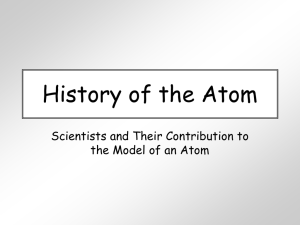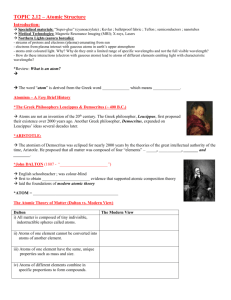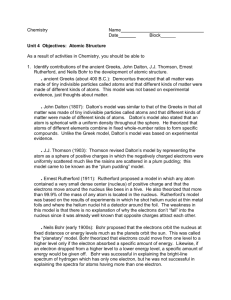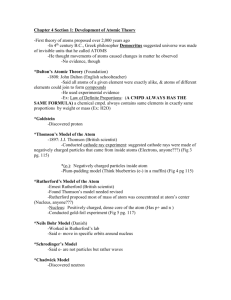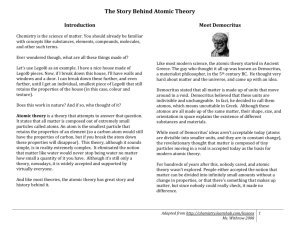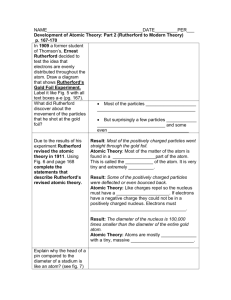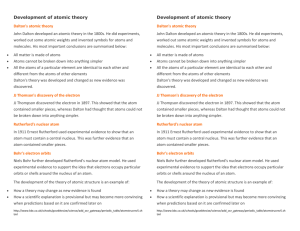Atomic Structure Packet
advertisement
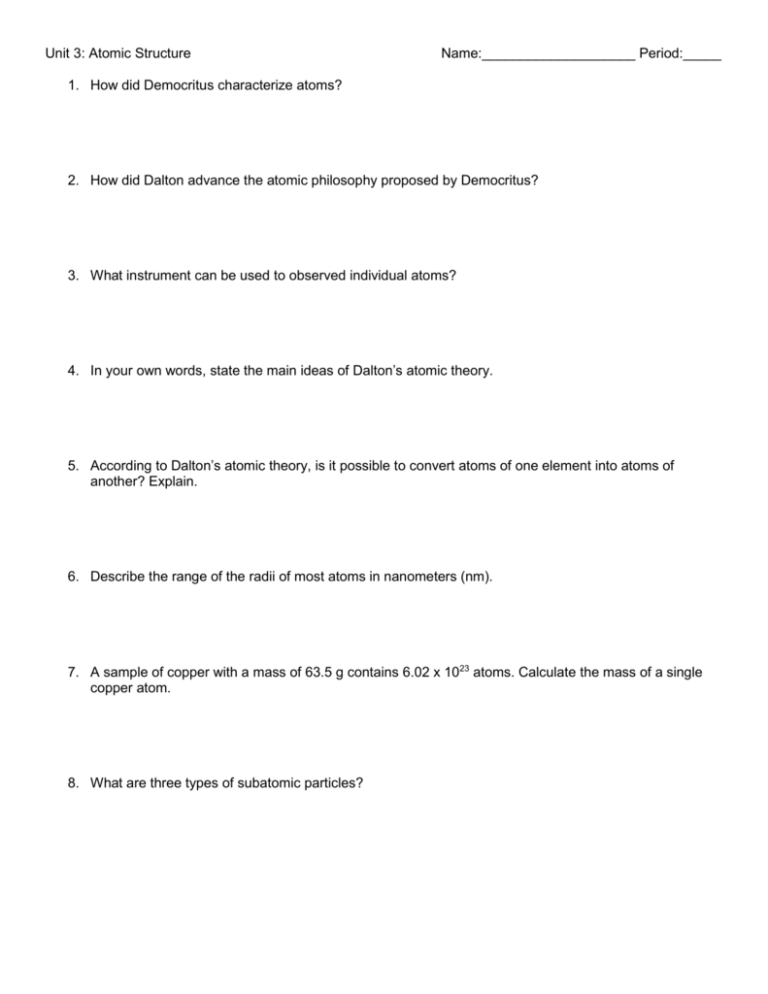
Unit 3: Atomic Structure Name:____________________ Period:_____ 1. How did Democritus characterize atoms? 2. How did Dalton advance the atomic philosophy proposed by Democritus? 3. What instrument can be used to observed individual atoms? 4. In your own words, state the main ideas of Dalton’s atomic theory. 5. According to Dalton’s atomic theory, is it possible to convert atoms of one element into atoms of another? Explain. 6. Describe the range of the radii of most atoms in nanometers (nm). 7. A sample of copper with a mass of 63.5 g contains 6.02 x 1023 atoms. Calculate the mass of a single copper atom. 8. What are three types of subatomic particles? 9. How does the Rutherford model describe the structure of atoms? 10. What are the charges and relative masses of the three main subatomic particles? 11. Describe Thomson’s and Millikan’s contributions to atomic theory. 12. Compare Rutherford’s expected outcome of the gold-foil experiment with the actual outcome. 13. What experimental evidence led Rutherford to conclude that an atom is mostly empty space? 14. How did Rutherford’s model of the atom differ from Thomson’s? 15. What distinguishes the atoms of one element from the atoms of another? 16. What equation tells you how to calculate the number of neutrons in an atom? 17. How do the isotopes of a given element differ from one another? 18. How is atomic mass calculated? 19. What makes the periodic table such a useful tool? 20. What does the number represent in the isotope platinum-194? Write the symbol for this atom using superscripts and subscripts. 21. The atomic masses of elements are generally not whole numbers. Explain why. 22. List the number of protons, neutrons, and electrons in each pair of isotopes. a. 63𝐿𝑖, 73𝐿𝑖 b. 42 44 20𝐶𝑎, 20𝐶𝑎 c. 78 80 34𝑆𝑒, 34𝑆𝑒 23. Name two elements that have properties similar to those of the element calcium (Ca). 24. Why did Rutherford’s atomic model need to be replaced? 25. What was the basic new proposal in the Bohr model of the atom? 26. What does the quantum mechanical model determine about electrons in atoms? 27. How do two sublevels of the same principal energy level differ from each other? 28. How can electrons in an atom move from one energy level to another? 29. The energies of electrons are said to be quantized. Explain what this means. 30. How many orbitals are in each of the following sublevels? a. 3p sublevel b. 3d sublevel c. 2s sublevel d. 4p sublevel e. 4f sublevel 31. What are the three rules for writing the electron configuration of elements? 32. Use Figure 5.7 in your book to arrange the following sublevels in order of decreasing energy: 2p, 4s, 3s, 3d, and 3p. 33. Why does one electron in the potassium atom go into the fourth energy level instead of squeezing into the third energy level along with the eight already there?




